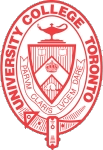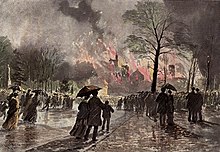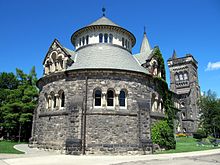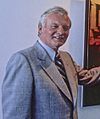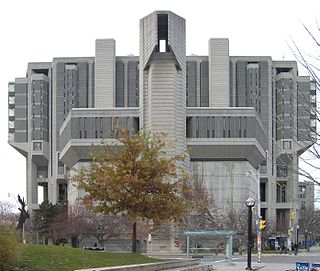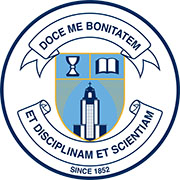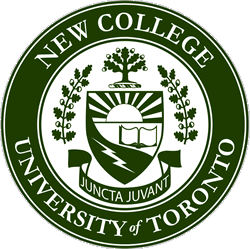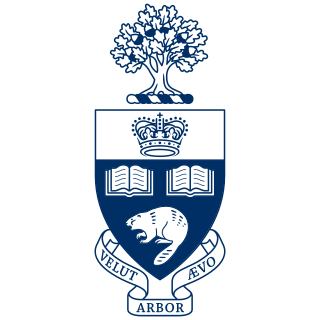Arts and media - David Ben, class of 1985, magician.
- David Cronenberg, class of 1967, director.
- William B. Davis, class of 1959, actor, The X-Files .
- Bonnie Fuller, class of 1977, editorial chief of American Media (Star, Shape, Men's Fitness, Natural Health).
- Dr. Arthur Hiller, class of 1947, filmmaker, Academy Award Winner, 2002.
- Charmion King, class of 1947, actor.
- Ted Kotcheff, class of 1952, executive producer, Law and Order SVU .
- Selena Li, class of 2010, TVB actress
- Tim Long, class of 1992, comedy writer, The Simpsons , Late Night with David Letterman .
- Lorne Michaels, class of 1966, producer, Saturday Night Live .
- Charles Pachter, class of 1964, artist.
- Paul Shaffer, class of 1971, musician, Saturday Night Live , Late Show with David Letterman .
- Johnny Wayne, class of 1940 & Frank Shuster, class of 1939, comedians.
- Paul Sun-Hyung Lee, actor, Kim's Convenience .
- Patrick Watson class of 1951, First independent CBC Chairman, writer, television host interviewer producer and director "[This Hour Has Seven Days].
Business - Edmund Clark, class of 1969, president & CEO, TD Bank Financial Group.
- William Francis, class of 1950, founder, Auto Trader.
- Dr. Warren Goldring, class of 1949, former chair, AGF Management Ltd. [28]
- Paul Jones, class of 1972, former publisher, Maclean’s. [29]
- Sergio Marchionne, class of 1978, CEO, Fiat.
- Earl Orser, class of 1950, former president & CEO of London Life.
- David A. Rosenberg, class of 1983, economist.
Education - May Bell, Ella Gardiner, Margaret Langley, Margaret Brown, Catherine Brown, class of 1885, first women to graduate from the University of Toronto. [30]
- Dr. Anne Golden, class of 1962, former director of the United Way, CEO Conference Board of Canada.
- Dr. Amir Hussain, class of 1987, Editor of the Journal of the American Academy of Religion .
- Dr. Walter Kohn, class of 1945, physicist, Nobel laureate.
- Prof. Michael Marrus, class of 1963, former dean, School of Graduate Studies, University of Toronto.
- Dr. Lorna Marsden, class of 1968, former president and vice-chancellor, York University.
- Dr. Rose Wolfe, chancellor emerita, University of Toronto.
Law - The Hon. Rosalie Abella, class of 1967, judge, Supreme Court of Canada.
- Charles Dubin, class of 1941, commissioner, Dubin Inquiry.
- Susan Eng, class of 1972, lawyer and former chair of the Metropolitan Toronto Police Services Board.
- Brian Greenspan, class of 1968, criminal lawyer.
- Edward Greenspan, class of 1965, criminal lawyer.
- The Hon. Nicholas Kasirer, judge, Supreme Court of Canada.
- The Hon. Horace Krever, class of 1951, commissioner, Inquiry on the Blood System in Canada.
- The Hon. Bora Laskin, class of 1933, former Chief Justice of Canada.
- The Hon. Sidney Linden, class of 1961, commissioner, Ipperwash Crisis Inquiry.
- Sir Francis Vallat, Legal Adviser to the Foreign and Commonwealth Office
| Literature and journalism - Barbara Black, class of 1963, columnist.
- Matt Cohen, class of 1963, novelist.
- Joy Fielding, class of 1966, author, Missing Pieces.
- Barbara Frum, class of 1959, journalist.
- Camilla Gibb, class of 1991, author, Mouthing the Words , The Petty Details of So-an-so’s Life .
- Jennifer Lanthier, class of 1985, children's author, journalist.
- Stephen Leacock (class of 1891), humorist.
- Avi Lewis, class of 1988, broadcaster.
- Stephen Lewis, class of 1959, diplomat, author.
- Heather Mallick, class of 1981, columnist, The Toronto Star .
- Rona Maynard, class of 1972, former editor, Chatelaine.
- John McCrae, class of 1894, soldier and author, “In Flanders Fields”.
- Farley Mowat, class of 1949, author, Never Cry Wolf .
- Michael Ondaatje, class of 1965, author, The English Patient , In the Skin of a Lion .
- Marilyn Powell, class of 1960, broadcaster.
- Kate Taylor, class of 1983, columnist, The Globe and Mail.
Government - The Hon. Edward Blake class of 1854, former Premier of Ontario.
- Sarmite Bulte, class of 1974, former M.P., Parkdale-High Park.
- The Hon. Tony Clement, class of 1983, M.P., Parry Sound-Muskoka, Minister of Industry.
- The Hon. Bill Davis, class of 1951, former Premier of Ontario.
- The Hon. Bob Kaplan, class of 1958, former Solicitor General of Canada.
- Arthur Meighen, class of 1896, former Prime Minister of Canada. [31]
- William Lyon Mackenzie King, class of 1895, former Prime Minister of Canada.
- Charles Vincent Massey, class of 1910, first Canadian-born Governor General.
- The Hon. Bob Rae, class of 1969, former Premier of Ontario.
- Saul Rae, class of 1936, diplomat.
Science and medicine Athletics |
